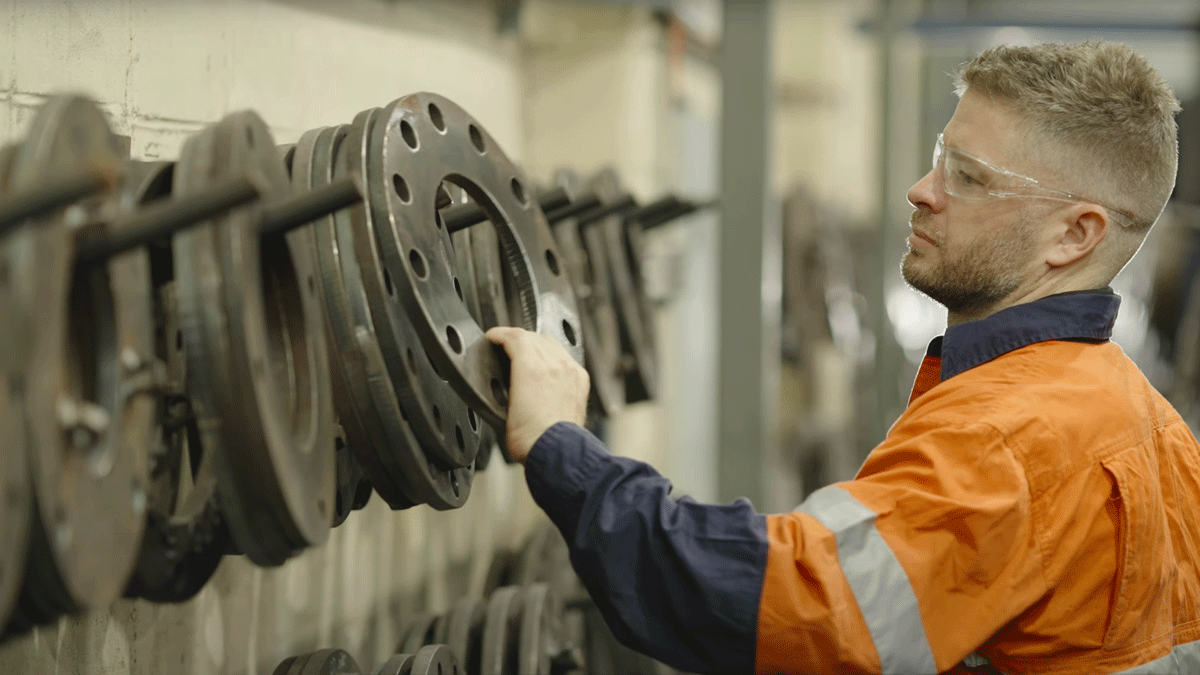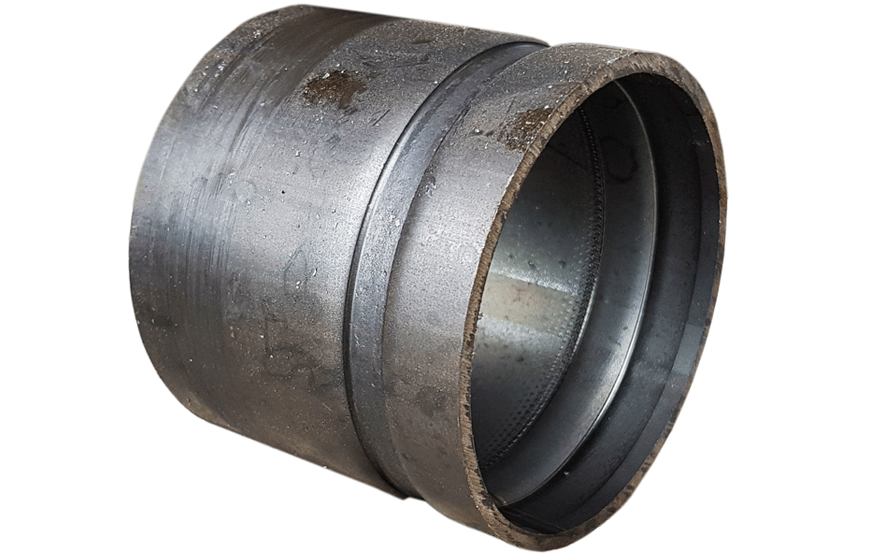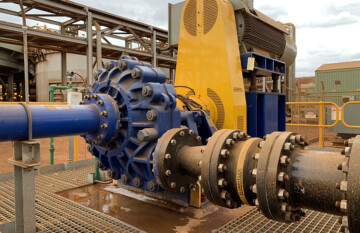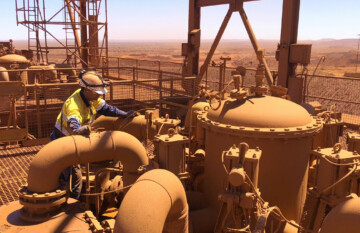There’s a dizzying array of options when it comes to end connections for slurry piping. Knowing how each connection works—and what you need to consider—will help you design or replace your slurry piping with confidence.
We’ve put together this handy reference covering the most common end connections for mining hose and lined pipe:
- Plain ends
- Flanged muff coupling ends
- Fixed and swivel flange ends
- Grooved ends
- Threaded ends
- Welded ends
- Flanged full spigot ends
- Double flanged ends
Plain ends
A plain end connection is a clean cut (generally a 90° angle) without any flanges, grooves, or threaded ends. It’s commonly used where the pipe is discharging into a tank, chute, or hopper.
Pros:
✔ Available on lined piping and mining hose
✔ Ideal for discharge applications
Cons:
✖ Limited in use
✖ Can only be used for discharge or connecting with certain couplings
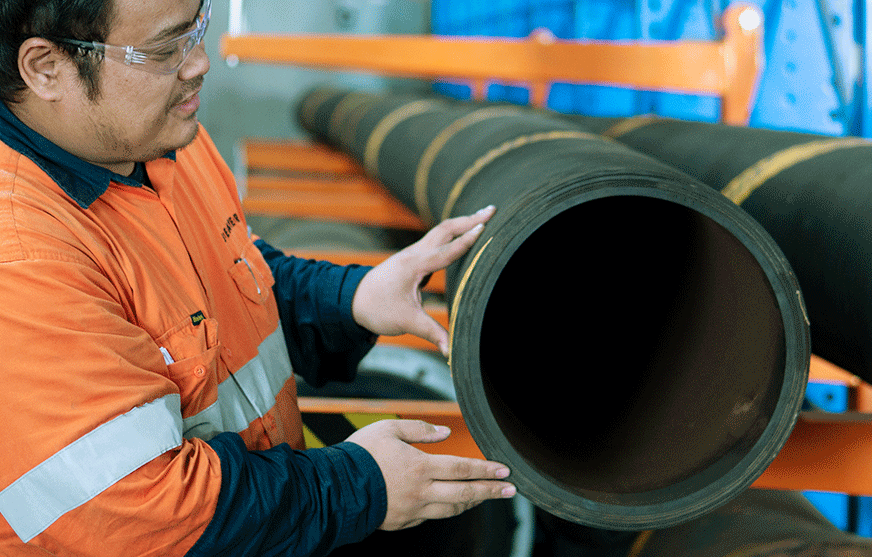
Plain end connection
Flanged muff coupling ends
A flanged muff coupling connection is a two-piece sleeve around the hose, with nuts and bolts on the outer sides. The hose can be cut to length on site for emergency replacements or where the distance from pipe to pipe can’t be accurately measured.
For flanged muff couplings, it’s best to tell the supplier that the hose’s outside diameter needs to fit a muff coupling. That’s because a standard hose spec can be slightly bigger than a muff coupling, so there could be problems installing it when it gets to site.
Pros:
✔ Available on mining hose
✔ Allows hose to connect to hoses or steel spools
Cons:
✖ Not suitable for high pressure applications
✖ Not suitable where there’s axial or end pull
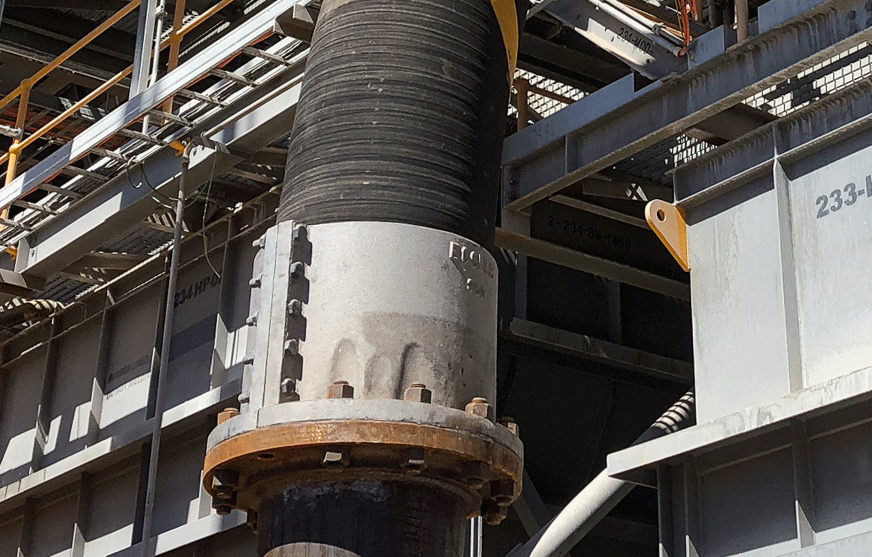
Flanged muff coupling end connection
Fixed and swivel flange ends
There are two types of flanged ends for lined pipe or hoses—fixed flange or swivel flange.
With a fixed flange, the steel flange face is fixed to the end of the pipe or hose. In mining hose, the outer rubber is extended over the flange with a full-circle or split-ring backing plate. This provides a strong seal and stops corrosion on the flange.
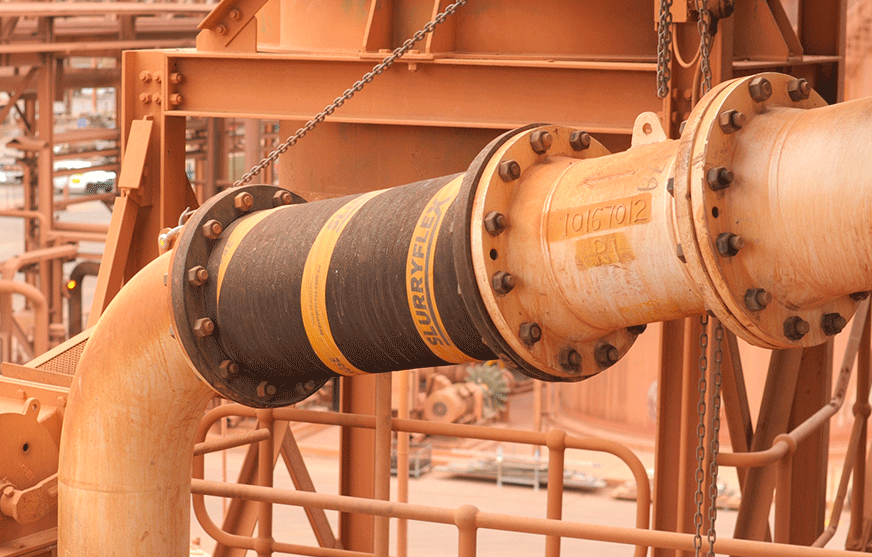
Fixed flange end connection
A swivel flange has a separate flange ring that floats behind the lip built into the end of the pipe or hose. The rotating face gives you more flexibility when aligning and bolting into existing spools.
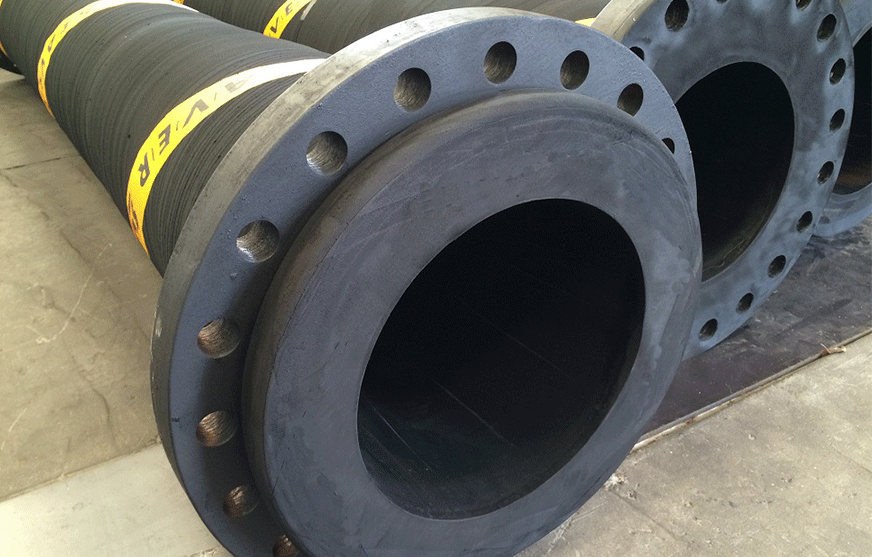
Swivel flange end connection
In our experience, having a fixed ‘flange by swivel’ connection (a fixed flange at one end of the pipe and a swivel at the other) lets you bolt the fixed end, and rotate then bolt the swivel end. When you’re replacing very heavy pipework or where you can’t rotate the pipes manually, it’s best to go ‘swivel by swivel’. This will make it much easier when you’re replacing large spools or hoses.
Pros:
✔ Available on lined piping and mining hose
✔ High integrity join
Cons:
✖ ‘Fixed by fixed’ connections can be very difficult to fit
Grooved ends: Roll, cut and ring
Grooved ends are a good option when you’re connecting pipes with Victaulic or other coupling systems. Using a coupling makes it faster to connect and disconnect pipelines for installation and maintenance.
There are two types of grooved ends for lined piping and mining hose—rolled or cut. With lined piping, there’s also an option called a ring groove.
Roll grooved ends
A roll grooved end is manufactured by pressing an upper roll into the outside of the pipe end to imprint a groove into the pipe’s outer diameter. A coupling then fits over the groove. Roll grooving doesn’t reduce the pipe or hose wall thickness in the process.
If you’re using lined pipe with a roll grooved end, it can sometimes create problems. The process pushes the pipe wall into the interior of the pipe, creating a dimple that can protrude into the pipe interior.
If you’re using a castable liner, such as polyurethane or filled resin, this will result in a thinner liner thickness over the dimple. With rubber-lined piping—which has a set thickness—it will increase the dimple and create a flow obstruction. There’s also increased wear on the liner over the dimple.
Pros:
✔ Available on lined piping and mining hose
✔ Doesn’t reduce pipe or hose wall
Cons:
✖ Creates a dimple in pipe interior
✖ Can create a flow obstruction and increased wear on liner
Cut grooved ends
Cut grooved ends are machine cut into the pipe or hose wall and then connected with a coupling. Unlike roll grooved ends, there’s no intrusion into the interior of the pipe. You’d generally use this end with larger pipes that have a heavier wall thickness, otherwise you need to increase the wall thickness to accommodate the cut groove.
Pros:
✔ Available on lined piping and mining hose
✔ No intrusion into the pipe or hose interior
Cons:
✖ Reduces pipe or hose wall thickness
✖ May need to increase wall thickness to accommodate groove
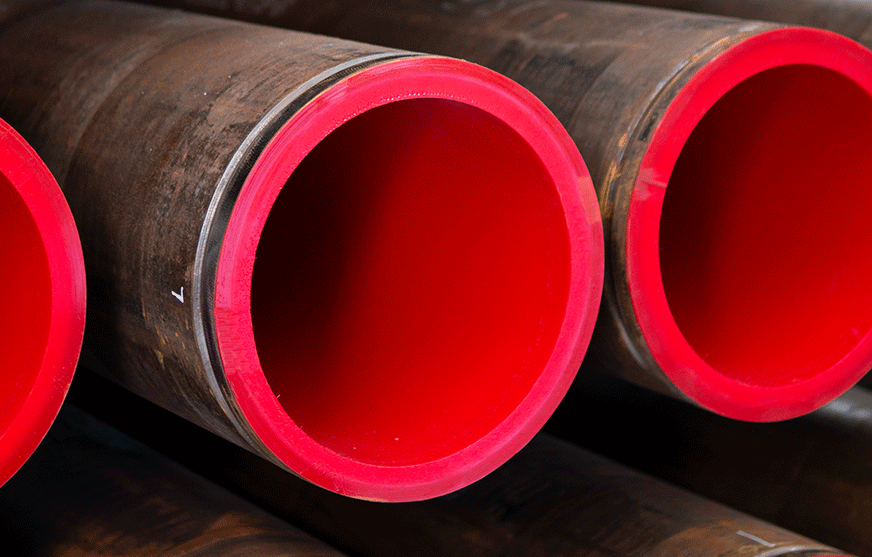
Cut grooved end connection
Ring grooved ends
Ring grooved ends are often used in lined pipe systems as there’s no protrusion into the pipe interior or reduction in the pipe wall thickness. A ring is welded onto the outside of the pipe and the coupling is mated onto the ring on the outside of the pipe.
You need a larger size coupling when connecting to pipework, but the key benefit of the ring groove is that it doesn’t impact on the pipe wall thickness and liner.
Pros:
✔ Available on lined piping
✔ No intrusion into the pipe or hose interior
Cons:
✖ Will need to increase coupling size to fit over ring
✖ Additional tooling requirements
Threaded ends
Threaded ends have machined threads that are screwed into mated ends. They’re common in high pressure air or steam pipework and small-bore applications of 8” or less.
In our experience, threaded ends are best for use in pipeline systems where the sections won’t need to be replaced, such as paste backfill reticulation systems. As soon as the pipe is unscrewed, slurry will contaminate and potentially damage the thread, so it’s limited in its application.
Pros:
✔ Available on lined piping and mining hose
✔ Ideal for high pressure air or steam
Cons:
✖ Threads are prone to contamination and damage
✖ Avoid if pipework will be removed or replaced regularly
Fully welded ends
Welding is only an option for unlined pipe (such as unlined steel) or lined pipe that can withstand the heat of the welding process, such as ceramic-lined pipe. HDPE pipe can also be welded but this requires specialised equipment and training.
A welded end has a high integrity joint, so there’s less risk of leaks. It’s commonly used in pipelines as it’s faster and quicker than bolting up multiple flange attachments.
The drawback of welding is it’s difficult to replace sections because you have to cut the pipe and weld new sections. In processing plants where pipework is regularly replaced, we recommend using a coupled or flanged system.
Welded ends do differ in how they are prepared, so it’s important to specify what type of weld end you need when ordering your piping.
Pros:
✔ High integrity joint
✔ Economical for pipelines
Cons:
✖ Not suitable for polyurethane or rubber-lined pipe
✖ Avoid if pipework will be removed or replaced regularly
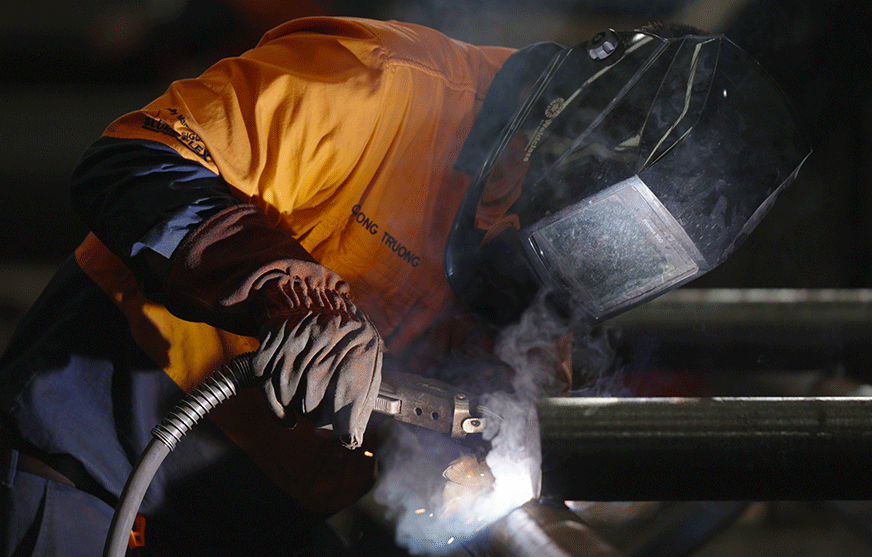
Welded end connection
Flanged full spigot ends
Flanged full spigots (also known as reinforced spigot flanges) have a steel spigot that is built into the hose layer. It can have either a fixed or swivel flange.
We recommend using a full spigot for high pressure applications, where there’s high amounts of end pull on the hose, or the hose is hanging and needs to support its own weight or the weight of the adjoining pipe.
The length of the spigot can vary depending on the diameter and the application. Smaller diameter hoses will have a shorter spigot, while larger diameter and/or high-pressure hoses will have longer spigots. They are more expensive than standard integral flanged ends—the cost of the spigot can be quite expensive depending on the working pressure required and the flange drilling.
Pros:
✔ Available on mining hoses
✔ Ideal where there’s high axial/end pull
Cons:
✖ More expensive than standard integral flanged ends
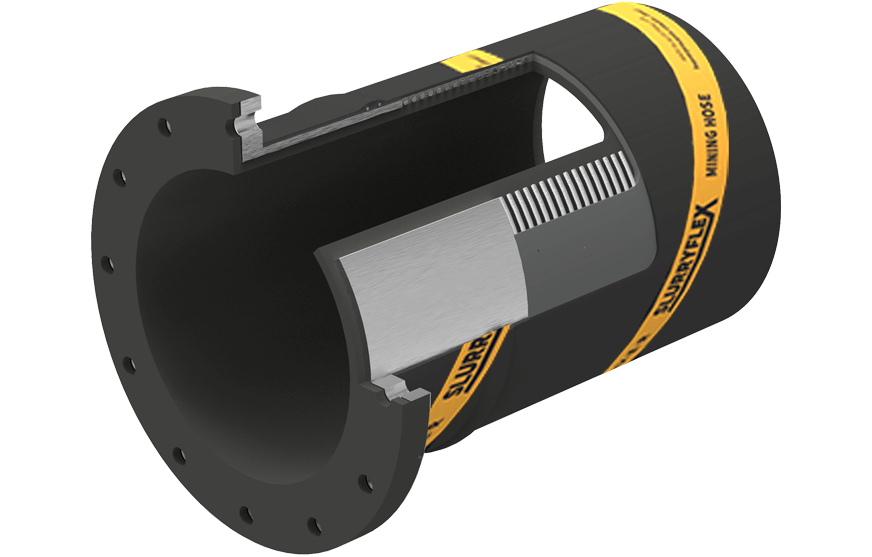
Flanged full spigot end connection
Double flanged ends
A double flanged end has two fixed, steel flanges built into the end of the hose. The flange doesn’t impinge into the interior diameter of the hose while giving you extra reinforcement on the ends.
This type of end is recommended for heavy duty applications where there’s pressure considerations, or high axial pull or movement. They’re mainly seen on trunnion hoses used in dredging applications.
Pros:
✔ Available on mining hoses
✔ Ideal for dredging applications
Cons:
✖ More expensive than standard integral flanged ends
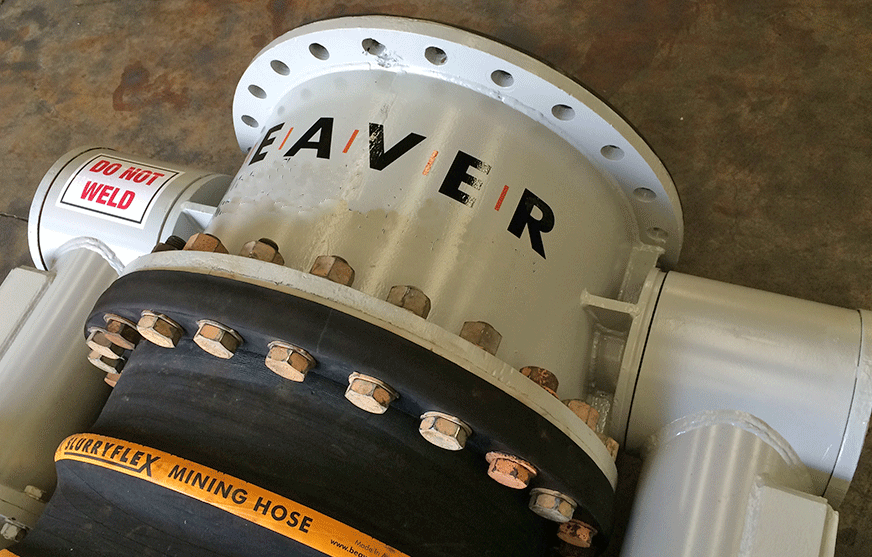
Double flanged end connection
Know your ends to save time and maintenance
Knowing more about the different slurry piping end connections will save you time and hassle when it comes to replacing pipework in your processing plant. With many different options available, consider which of these will best suit your application. It will help you avoid excessive wear around end connections and dreaded unplanned maintenance to fix the problem.








